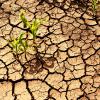
A new study investigates whether COVID-19 lockdowns and vaccines complement or substitute each other, offering insights to policymakers about optimizing public health and economic outcomes.
The COVID-19 pandemic has taken a toll on people's lives and the global economy, with millions of deaths and over 100 million people losing their jobs. To combat the devastating effects of the pandemic, governments had two main weapons: vaccines and lockdowns. Understanding how these two measures may complement or substitute each other is imperative in finding the best mitigation strategies.
In their study published in the European Journal of Operational Research, an international team of researchers investigated how lockdown policies and vaccinations should be balanced to optimize public health and economic outcomes during the vaccine roll-out period. The study used a dynamic optimization model that captured both epidemiological and economic considerations, including factors such as vaccination rates, infection rates, and economic losses.
“We found that there is no simple answer to our question: vaccinations and lockdowns can be either complements or substitutes depending on various model parameters,” says Stefan Wrzaczek, a researcher in the IIASA Economic Frontiers Program and a coauthor of the study.
The study found that for parameters reflecting conditions in developing countries, lockdowns should typically be relaxed after substantial shares of the population are vaccinated. However, the researchers also found that for slightly different parameter constellations, vastly different lockdown policies may be optimal.
The study offers a framework for policymakers during the crucial intermediate phase between initial lockdowns and widespread vaccination, providing a valuable tool in planning their pandemic response strategy. While the time period of the vaccine rollouts is now finished with regard to the COVID-19 pandemic, considering its immense impact, it is crucial that policymakers are prepared for possible pandemics in the future.
“Countries invest heavily in maintaining their military capabilities during peacetime as a precautionary and preventive measure,” notes IIASA Economic Frontiers Program Director Michael Kuhn, who is also a coauthor of the study. “Similarly, it would be wise for nations to allocate resources towards vaccine research and maintaining vaccine production capacity, even though pandemics occur only every few decades.”
Reference
Caulkins, J.P., Grass, D., Feichtinger, G., Hartl, R.F., Kort, P.M., Kuhn, M., Prskawetz, A., Sanchez-Romero, M., Seidl, A. and Wrzaczek, S. (2023). The hammer and the jab: Are COVID-19 lockdowns and vaccinations complements or substitutes? European Journal of Operational Research. DOI: 10.1016/j.ejor.2023.04.033 [pure.iiasa.ac.at/18755]
News

13 May 2024
Analyzing the underlying causes of the food crisis in Gaza

25 April 2024
Climate change could become the main driver of biodiversity decline by mid-century

09 April 2024


